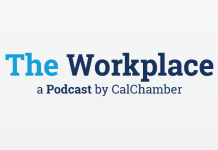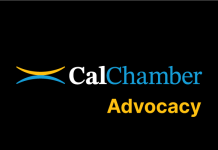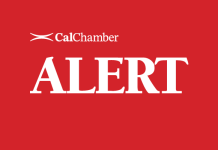 The latest draft plan for managing the Bay-Delta system continues to include a California Chamber of Commerce-supported option that balances the diverse needs of urban, agricultural and environmental water uses while preventing reduced water supplies for the state.
The latest draft plan for managing the Bay-Delta system continues to include a California Chamber of Commerce-supported option that balances the diverse needs of urban, agricultural and environmental water uses while preventing reduced water supplies for the state.
The draft update to the Bay-Delta Water Quality Plan was released on July 24 by the State Water Resources Control Board.
The San Francisco Bay/Sacramento-San Joaquin Delta (Bay-Delta) system is the source of drinking water for two-thirds of the state’s population. It also provides critical habitat for fish and wildlife, including many endangered and threatened species.
Two Approaches
The two regulatory approaches in the July Bay-Delta draft plan are:
- The Healthy Rivers and Landscapes (HRL) program — formerly referred to as the Voluntary Agreements — reflects a suite of commitments among state, federal and public water agencies. It uses both flow and non-flow measures that help support native species and the environment and create a governance structure that oversees implementation and helps with decision making.
- A flow-only approach for parties not participating in the HRL program.
In January, the CalChamber and a diverse coalition of organizations highlighted the far-reaching economic impacts of the Bay-Delta and asked the State Water Board to support the holistic Healthy Rivers approach proposed by federal, state and local water agencies.
The CalChamber-led coalition commented that the more reasonable flow measures in the HRL program would assist in ensuring that water users of all types can better predict water availability and plan accordingly. For example, developers can better model water availability to serve new housing developments. Also, agricultural businesses can better plan for the appropriate acreage to plant, and this increased certainty helps support related businesses. Overall, this alternative minimizes negative impacts on the economy while achieving ecosystem benefits.
Healthy Rivers Approach
In a news release, public water agencies praised the HRL program as an innovative approach to managing California water supplies.
Advancing the program, they said “will immediately connect new flows in our rivers and through the Delta with important habitat across our landscape to improve conditions for fish and wildlife, while also working in harmony with our economic needs for water for 32 million people and sustaining some of the most vibrant farms and ranches in the world.”
Gov. Gavin Newsom said in a news release that he is introducing a legislative proposal through a separate trailer bill to create a California Environmental Quality Act (CEQA) exemption for water quality control plans to speed the time for completing the plans “by removing unnecessary and redundant process requirements.”
The July 2024 update to the Bay-Delta plan is available on the State Water Board’s website.
Staff Contact: Kristopher Anderson


